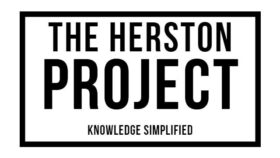The ideas in this post have been inspired by Rebel Ideas by Matthew Syed. Make sure to check out my Rebel Ideas by Matthew Syed: Summary too!
Why meetings can be troublesome
Meetings are places where dominance dynamics are usually in full swing. When one or two people dominate the meeting, it suppresses the insights of other members of the team – particularly introverts or those who do not like to speak up.
But it is even worse when the dominant individual in the meeting is the leader. People are more likely to parrot back ideas to either not upset or try to impress that person, and new unique ideas which do challenge the main focus are suppressed as they are considered attacks on authority instead of trying to move everything forwards.
At many meetings, similar things happen. Communication is dysfunctional, many people are silent and whoever is in charge continually speaks, with the occasional agreement. Somebody’s status decides what is said and people don’t say what they really think, but instead what they think what wants to be heard.
Because of this, crucial information won’t be shared, information which could be critical for some decision-making ideas.
Most people have things to share – but when they are not listened to, the cognitive capacity of a group in a dominant meeting is severely limited to how willing people are to speak up. Imagine an example where people are required to guess the length of the London Underground. In a meeting, somebody is likely to speak first, and then subsequent suggestions may be a copy of the original or a slight change. This is because people do not want to feel like they are challenging or be the outsider with a widely different view – even though their perspective could help move everyone towards the right answer. It acts as a signal.
Here are 4 alternatives to try
1. Amazon’s Golden Silence
For more than a decade, meetings at the tech giant Amazon have not started with the usual PowerPoint presentation or banter, but total silence. Executives prepare a six-page, narratively structured memo that has real sentences and topic sentences and verbs. That means it isn’t just bullet points. This makes the executives really must think about the important points, but to also create a context for the discussion.
The teams then read a six-page memo that summarises the main agenda items. Only when everyone has read the memo then discussion begins.
When people begin discussing, the most senior person speaks last. This not only reduces the risk of others mirroring what the person in authority does, but also allows the leader to consider and evaluate all the ideas before giving their own.
This technique is powerful because it commits people to deciding what they think before leaning onto the opinions of others. They have the required space to bring their diverse ways of thinking into inception before discussion.
2. Brain Writing
This is a method of generating creative ideas, but instead of stating ideas out loud – like in the case of brainstorming – team members are asked to write them down on cards, which are then posted onto a wall for the rest of the group to vote on. Unlike Brainstorming where quieter voices may not be heard, brainwriting allows every voice to be heard. Leigh Thompson of the Kellogg School of Management states that this method lets you gain access to the output of every brain, rather than just one or two.
To help create a meritocracy of ideas, nobody should identify themselves with their contributions with either their name or trying to prompt people to recognise what one it is by including client’s names or other associative information.
Once all the ideas have been submitted, you can vote on the best ideas – say top 20, and then divide into teams to “take them to the next level” to combine ideas or spark new insights.
When brain writing has been put head to head with brainstorming, it generates around twice the volume of ideas and produces higher quality ideas when rated by independent assessors. The understood reason for this is simple, brain writing liberates diversity from the constraints of dominance dynamics, everyone’s voice is heard and the best ideas win – regardless of position.
3. The One-Pager
A simpler idea to Amazon’s golden silence is a “one-pager” technique. This is where everyone attending a meeting is required to write either a one-pager or couple of paragraphs on their views on the agenda item. These papers are then shuffled, handed around the table and read out loud in random order. The group can then try to pick apart the ideas and combine ones together to generate new suggestions.
This method is another quick way of separating somebodies’ status from the person who proposed it.
4. Strict Timed Meetings
Meetings can sometimes drag on without many important things being discussed. In a Bloomberg interview in 2006, Marissa Mayer (who was working for Google) said that she holds up to 70 meetings a week. The only way to cram them in was to break the meetings into five or 10 minutes.
Whilst there isn’t an exact number of minutes each meeting should be, aiming to reduce the meeting time will ensure that the most important points are spoken, and any points worth talking about can either be rescheduled or deferred to somebody else to have autonomy over.


Pingback: 3 Ways You Can Improve The Diversity In Your Teams – The Herston Project
Pingback: How Diversity Can Help Both You and Your Teams Flourish – The Herston Project
Pingback: Rebel Ideas by Matthew Syed: Summary – The Herston Project